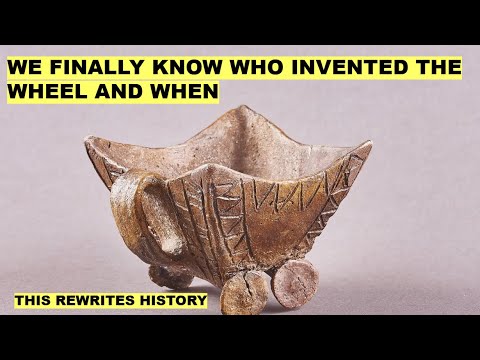1982: Fred Dibnah shows how to erect a CHIMNEY SCAFFOLD at 200 feet [video]
https://www.youtube.com/watch?v=w3ma9iYx4rg
#HackerNews #FredDibnah #ChimneyScaffold #Construction #Video #1982 #EngineeringHistory

1982: Fred Dibnah shows how to erect a CHIMNEY SCAFFOLD at 200 feet [video]
https://www.youtube.com/watch?v=w3ma9iYx4rg
#HackerNews #FredDibnah #ChimneyScaffold #Construction #Video #1982 #EngineeringHistory

@TOrynski As a fan of tram systems, I recommend Episode 184 of Well Theres Your Problem:
https://inv.nadeko.net/watch?v=SQ7J1KgCSC8&list=PLnmst0j-3FuZ5Mx5GU45uPBvA_WNTBLWm&index=133
It covers the #EngineeringHistory around the rise and fall of laissez-faire #tram operators and manufacturing
Between the wheels
Hello
#HistoryOfTechnology #WheelOrigin #InventionOfTheWheel #Archaeology #ComputationalDesign #NeolithicInnovation #EngineeringHistory #CarpathianMines #RoyalSocietyOpenScience
{ ¿Animal fat
https://youtube.com/watch?v=P2I3BJeI19U
#TheMeatrix
¿:https://www.counterpunch.org/2025/08/29/domestic-terrorism-and-spectacularized-violence-in-trumps-warfare-state/ #warpigs // #pigsonthewing || #spiritedaway

I spent a while fixating on trying to discover why the macOS iCloud/“CloudDocs”/“Mobile Documents” daemon is named bird, w/ a cli in /usr/bin named brctl
After some digging I’m /pretty/ sure the b stands for uBiquity— an internal codename for what was marketed as “iCloud”; this is supported by e.g. [1]’s equivalence between ubiquityIdentityToken and com.apple.bird.token
I’m still pretty at total guess on r, leaning “record” (maybe also as rc → record since bird is code-internally BRCDaemon ; though it also seems likely c = container. I don’t think rc → runcom by way of initrc, bashrc, etc)
secondary theory is br is for “barrier” based on a loose symbol or two.
I’m pretty strongly guessing that “i” in bird stands for nothing so much as “OMG [ swe coworker], it’s not pronounced Bee-Arr-Dee, it’s pronounced BIRD” (cf gif, sql, … cuddle vs c-t-l [by rights hachyderm is ku-bECK-dl / ku-Bechdel territory] )
Anyway if anybody happens to know the answer, plz lmk. #apple #icloud #macos #brctl #clouddocs #daemon #engineeringhistory #lore
[1] https://developer.apple.com/library/archive/qa/qa1935/_index.html
Discover how James Watt's enhancements to the steam engine revolutionised the world in my article today.
Read it here: https://discovermyeurope.eu/remembering-the-genius-who-engineered-the-future-james-watt/
#JamesWatt #SteamEngine #IndustrialRevolution #EngineeringHistory #Innovators
Early Life and Influences James Watt, born on this day on 30 January 1736 in Greenock, Scotland, is celebrated not for inventing the steam engine, but for revolutionising it in a way that transformed the world. Watt’s work laid the groundwork for the Industrial Revolution, changing industries and societies forever. From a young age, Watt [...]
The four-stroke engine involves the piston making four strokes—intake, compression, power, and exhaust—which improved the efficiency of internal combustion engines. This invention had a significant impact on the development of automobiles and various machinery.